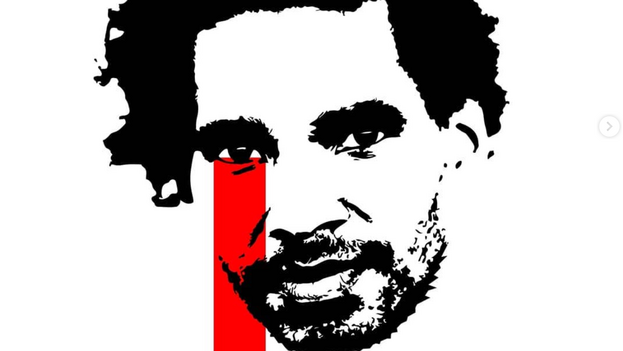
![]() 14ymedio, Julio Llopiz-Casal, Havana, 1 November 2021 — Me, I like to run away from common places (because what I want is to be happy and to not be pedantic), an idea has come to mind.
14ymedio, Julio Llopiz-Casal, Havana, 1 November 2021 — Me, I like to run away from common places (because what I want is to be happy and to not be pedantic), an idea has come to mind.
The most interesting artist of the 60s and 70s in Cuba is not Umberto Peña, it is not Servando Cabrera Moreno, it is Alfredo Rostgaard.
All three are great artists. But Rostgaard had the opportunity to practice his creativity in an area of global cultural production, which in the Cuba of those years was forbidden due to the conservatism that Revolutions also suffer.
As in the Cuban artistic avant-garde of the first half of the 20th century, where the most authentic echoes of the global avant-garde were found in caricature, design and other arts considered minor, in the first years of the Cuban Revolution the designers of posters wandered, scampered and frolicked on the grounds of systems of reference that for the conventional arts of the time were outlawed. That is why the influences of psychedelic graphics, Pop Art or Op Art, are seen more clearly on a poster or a book cover than in a painting from those years. continue reading
The conceptualism and minimalism that apparently we did not have in Cuban art are found in some works of design made for Casa de las Américas in the 70s, but especially in Alfredo Rostgaard’s posters: that beast of composition, typographic sensitivity and referential grace. In the rose of Canción Protesta, in the smoking chamber of the tenth anniversary of ICAIC, in the alien Lenin and the Nixon who becomes a werewolf and other posters are contained some of the most enduring and ambiguous aesthetic successes of the national artistic production. The person in charge is that man.
My personal gallery of artistic references is heterogeneous almost to the point of obscenity. My work ends up not looking much like theirs because the overlaps and combinations end up being too many. I am more like my contemporaries because vices, bad and good, stick together.
Rostgaard is among the creators I always return to. Recently I have been able to honor this tune like never before.
When I designed the image of Luis Manuel Otero Alcántara, with the red stripe that comes out of the lower eyelid and runs along the cheekbone and cheek, I especially thought of Rostgaard’s Angela Davis, but also of all the solidarity hemorrhage of Cuban graphics before his imprisonment.

I have always admired the visual acuity and daring in the political and solidarity graphics of the 60s and 70s in Cuba, especially that produced by the Organization of Solidarity of the Peoples of Africa, Asia and Latin America (Ospaal). I feel that in it there was a sense of emergency and the desire to make a viral image that was enviable, even though my way of understanding the world and Cuba are very different from those of those poster artists. I am not a designer; I am simply a conceptual artist who is interested in design as a tool. As a result of 27N (27 November) I have had the opportunity to use my knowledge in this regard in a way that I never had before.
I am sure that Alfredo Rostgaard felt a real need to sympathize with the imprisonment of Angela Davis, a black intellectual, communist, American, anti-racist activist, feminist, for the rights of the LGBTIQ+ community, linked to the Black Panthers. And in addition her works were commissioned by the Cuban State. My solidarity with Luis Manuel Otero Alcántara, for the brutality unleashed on him by the same state that commissioned the Angela Davis posters from Rostgaard, is just as authentic. The difference is that no one asked me for my image of Luis Manuel.
I don’t know if Rostgaard ever met Angela Davis. I not only know Luis Manuel, but I share with him aesthetic and experiential complicity. I saw him become an artist, and he me as well. We disagree and find our common ground. Today he is in prison for disagreeing politically with the Cuban government (like Davis at the time) and has suffered abusive violence for this.
The Havana Biennial is like the Ospaal. They are two institutions that emerged for cultural and political purposes and that ended up having only the latter, always state and never political-participatory. Today, Ospaal cannot afford the printing of the Tricontinental magazine (the publication from which Rostgaard’s posters were known worldwide), nor does the Havana Biennial apparently have the resources to financially support the projects of the artists who will participate in its fourteenth edition.
My no to the Havana Biennial has nothing to do with my being against the existence of the Biennial; I am not against the Biennial being used as a whitewash for violence that is the exclusive responsibility of the Cuban State and that will end up reaching us all if we do not react. Me is not written with L. L of Libertad [Freedom]: for Luis Manuel, for Maykel Osorbo, for José Daniel Ferrer, for Felix Navarro, for Yoan de la Cruz, for political prisoners, for all Cubans… everyone.
Among Angela Davis, Alfredo Rostgaard and Luis Manuel Otero Alcántara confirm this to me.
____________
COLLABORATE WITH OUR WORK: The 14ymedio team is committed to practicing serious journalism that reflects Cuba’s reality in all its depth. Thank you for joining us on this long journey. We invite you to continue supporting us by becoming a member of 14ymedio now. Together we can continue transforming journalism in Cuba.
